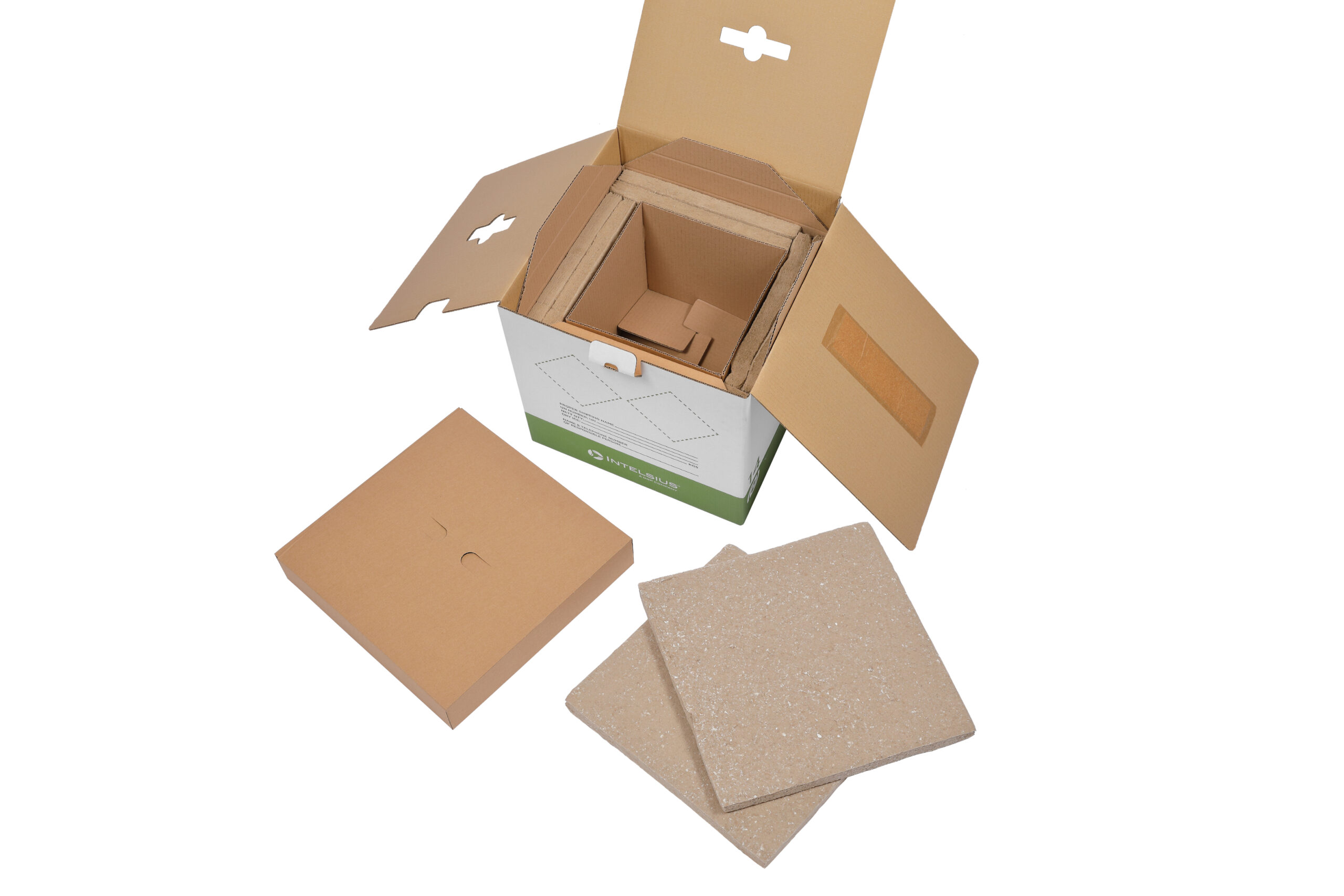If you ship life-saving medicines, samples, and devices, you’re balancing two urgent mandates: cut carbon and waste and raise your data game. In our work at Intelsius, we see these forces converging fast. Healthcare is under intense pressure to decarbonise, while regulators and quality teams expect continuous, auditable temperature control and full shipment visibility. Together, sustainability and data are reshaping packaging choices, modal decisions, and day-to-day logistics operations across pharmaceutical, biotech, and healthcare supply chains.
Why this matters now
Decarbonisation is becoming a contract requirement. Healthcare contributes a significant share of global emissions, and major health systems, such as the NHS in England, now require suppliers to publish Carbon Reduction Plans and align with a net-zero supplier roadmap by 2030 to remain eligible for tenders. That means packaging, modes, and processes must show measurable improvements year on year.
Data is a regulatory and quality imperative. EU GDP guidance and IATA standards (including CEIV Pharma and the Temperature Control Regulations) emphasise risk-based route profiling, temperature monitoring, calibration, and documented controls throughout distribution. In practice, that means using qualified packaging and monitoring technologies that prove product protection from door to door.
How the sectors are cutting carbon and waste
- Smarter, lower-impact packaging.
Leaders are transitioning from single-trip EPS to reusable systems and recyclable single-use designs, often incorporating PCM-based coolant strategies to optimise thermal mass. This reduces material waste and cuts the volumetric weight that drives transport emissions and cost. Pre-qualified systems that maintain temperatures of 2–8 °C, 15–25 °C, or −20 °C, or dry-ice ranges over extended durations enable shippers to consolidate lanes and transition to cleaner modes without compromising quality. - Modal shift and network redesign.
Air freight is reliable but carbon-intensive. Where stability and shelf life allow, switching lanes from air to ocean/rail slashes CO₂ per ton-km. Some pharma manufacturers now report up to ~98% lower transport emissions when converting qualifying lanes from air to ocean, supported by modern reefer networks and tighter control plans. - Closed-loop and pooled assets.
Returnable packaging pools (including rental models) extend service life, eliminate inventory bloat, and keep high-performance shippers in circulation, thereby cutting both CapEx and waste while improving thermal reliability compared to improvised solutions. - End-of-life clarity.
Clear recycling pathways and material selection (e.g., fully recyclable components for specific ranges) prevent otherwise good packaging streams from becoming general waste at destinations. Simple, published “how to recycle” guides on recycling make a measurable difference in real-world operations.
How data is improving operations (and sustainability)
Real-time visibility and consolidated telemetry are becoming non-negotiable. By streaming location, temperature, humidity, and shock data, QA teams can intervene before excursions become losses, saving product, preventing rush reships, and avoiding the extra emissions that come from remediation. Shippers are also using this data to profile lanes, tune pack-outs, and justify modal shifts with evidence.
This dovetails with evolving standards: USP <1079> series formalises risk-based storage and distribution practice, MKT-based excursion analysis, and monitoring device qualification, pushing the industry toward consistent, defensible data practices.
Green and Connected: packaging + connected data, built for compliance
At DGP Intelsius, we design, qualify, and service cold-chain packaging that helps customers achieve both targets, lower impact and higher visibility, without sacrificing performance.
1) Cut carbon and waste with the right system for the lane
- ORCA Multi-Use: high-performance reusable parcel and pallet shippers covering dry ice, −20 °C, 2–8 °C, and 15–25 °C profiles with long holds. Reuse reduces material waste and the embodied carbon of single-trip shippers over time.
- GreenTherm: a 100% recyclable dry-ice range (Category B UN3373 compliant) for lanes where return logistics aren’t feasible, combining long-duration performance with end-of-life simplicity.
- ORCA Rental: access premium, pre-conditioned ORCA systems on a ten-day rental, ideal for demand spikes, pilots, or when you want the environmental and performance benefits of multi-use without owning the fleet.
- Practical recycling support: published, material-specific recycling guidance so sites know exactly how to dispose of components responsibly.

2) Put shipments online – hardware-agnostic
- ORCA Connect: Our connected packaging range is designed to integrate with a variety of real-time trackers (we’re deliberately hardware-agnostic), allowing you to capture live location and condition data across dry ice, 2–8 °C, and ambient temperature ranges.
- Logger Integration: we work with established monitoring partners (e.g., Logmore for QR/data-rich loggers; Sendum, Roambee for real-time trackers), matching device features to route risk and product sensitivity.
- ORCA Cloud: one portal to track and report multiple logger types globally, reducing platform sprawl, speeding QA review, and simplifying GDP documentation.

3) Compliance by design
All systems are designed and tested against recognised standards (e.g., ISTA 7D/7E, IATA PGR, USP <1079>), aligning packaging performance and monitoring workflows with GDP expectations and airline/airport handling norms (including CEIV Pharma ecosystems).
4) Our own decarbonisation journey
We publish an annual Carbon Reduction Plan and are committed to achieving net zero by 2050, with concrete measures focused on energy efficiency, refrigerant management, commuting, renewable power, and recycling. We also maintain third-party sustainability benchmarking (e.g., EcoVadis).
What good looks like
- Profile each lane, then right-size pack-outs (coolant type, PCM set-point, payload-to-insulation ratio) to cut weight and risk. Pair with qualified packaging and documented conditioning SOPs.
- Instrument shipments with real-time trackers on higher-risk lanes; use download loggers where appropriate. Centralise data to a single portal for MKT-based decisions and faster QA release.
- Shift modes (air→ocean/rail) when shelf life and stability allow, pilot lanes with robust packaging and live monitoring to prove quality and quantify CO₂ savings.
- Close the loop: deploy multi-use fleets where reverse logistics are feasible; otherwise, use recyclable single-use items with clear disposal guidance. Track usage cycles to measure avoided waste and embodied-carbon savings.
Let’s make your next lane cleaner and smarter
We design connected, qualified packaging that de-risks your supply chain and advances your sustainability roadmap. Explore what we do at intelsius.com, or talk to us about our Green and Connected solutions: ORCA Multi-Use, GreenTherm, ORCA Connect, ORCA Cloud, and ORCA Rental for a solution that fits your products, lanes, and ESG goals.